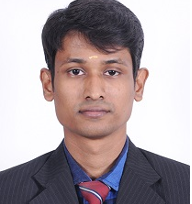Traditional Dance Forms of Kerala
Traditional Dance Forms of Kerala
1. Kathakali
Kathakali is a major form of classical Indian dance. It is a “story play” kind of art, but it is famous for the highly bright make-up, costume and facade mask worn by the traditional male actor-dancers. This dance is a Hindu recital art in the Malayalam-speaking southwestern area of India (Kerala).
The Kathakali dance roots are indistinguishable. The fully developed style of this dance originated around the 17th century, except its extraction is in the temple and folk arts such as Kutiyattam and religious drama of the southwestern Indian peninsula, which are traceable to the 1st millennium CE. This dance presentation is similar to all traditional dance arts of India, synthesizes music, singing performers, composition and hand and facial gestures together to communicate ideas. However, kathakali dance differs inside with the incorporation of movements from ancient Indian martial arts and athletic traditions of South India. Kathakali also differs in that the organization and details of its art appearance residential in the judges and theatres of Hindu principalities, unlike other traditional Indian dance which above all developed in Hindu temples and monastic schools.
The conventional themes of the Kathakali are folk mythologies, spiritual legends and religious ideas from the Hindu epics and the Puranas. The speaking performance has conventionally been performed in Sanskritised Malayalam. In contemporary compositions, Indian ballet troupes have built-in women artists, as well as modified Western story along with performance style such as those by Shakespeare
2. Theyyam
Theyyam is a popular Kerala dance form of the Malabar district of Kerala, and has been practiced by the people for thousands of years. Theyyam is a hallowed ceremonial dance dedicated to the Goddess Kali. This dance form is usually performed in front of the village shrine, along with the drummers. The word “Theyyam” is considered to be a modified form of the word “Daivam”
3. Kalaripayattu
Kalaripayattu is a conventional aggressive martial art, dance form of Kerala, and is measured to be the potent of all belligerent arts. In this dance cum martial art form, footwork patterns engage in recreating fashion along the story line. The weapons employed in this form are shields and swords.
The practitioners of Kalaripayattu have to undergo an intensive form of physical training, all intended to make the body agile, strong and supple. The ultimate aim is to achieve perfect co-ordination between the mind and the body. The training also includes specialization in indigenous medical practice too. However, once the course is completed, the practitioner should undergo regular oil massage and keep practicing the steps over and over again
.
4. Mohiniyattam
Mohiniyattam is a lasya subgenre of dance, performed in the Kaisiki vritti (graceful style), as discussed in antique Indian concert arts texts such as the Natya Shastra. Further specially, it is a dance that excels in Ekaharya Abhinaya structure with the purpose of having possession of significant dance presentation aided by singing and music.
5. Thirvathirakali
Thirvathirakali is a dance performed by women in charge to attain endless marital happiness. Thirvathirakali dance is performed in the Malayalam month of “Dhanu” (December-January). This trendy dance of Kerala is performed to render marital fidelity and female power. This is because these descriptions are what brings “Kamadeva” (spirit of Love) back to existence following the curse of Lord Shiva.
The graceful movements of this dance, which is executed by a group of dancers in the space around “nilavilakku”, signifies the passionate expressions and the stylishness of the female. The dance is distinct for its circular patterned movements accompanied by the applause of hands and singing.
6. Koodiyattam
Koodiyattam, also transliterated as kutiyattam, is a conventional drama art form in the state of Kerala, India. It is a combination of ancient Sanskrit theater with elements of koothu, an ancient performing art from the Sangam era.
7. Pulikalli
Pulikkali is a engaging folk art from the state of Kerala. It is performed by skilled artists to entertain guests on the occasion of Onam, a yearly harvest fiesta, celebrated mainly in the Indian state of Kerala. One of the the major well-known dance forms in Kerala is the Pulikalli. This dance requires men to color their whole exposed bodies to look like tigers. This thrilling dance form is performed during the occasion of the Onam festival at the Swaraj Round in Thrissur district of Kerala.
The men, resembling tigers, prance and move about like a tiger, their huge bellies bouncing up and down all the while. In training intended for this dance, the performers undergo a laborious process whereby their entire bodies are painted in myriad patterns and colours. In this period, the artists possibly will paint the facial mask of a tiger on their body. The performance revolves around the story line of a gun trotting hunter and the tiger.
image source
- kerala: https://www.trailblazersholidays.com/
- 2: https://i.pinimg.com/
- 3: https://media-cdn.tripadvisor.com/media/photo-s/04/b4/ae/f9/travspire-private-day.jpg
- 4: https://www.culturalindia.net
- 5: https://www.keralatourism.org
- 6: https://i.pinimg.com/originals
- 7: https://upload.wikimedia.org/wikipedia/commons/2/28/Pulikkali_during_Onam.jpg
